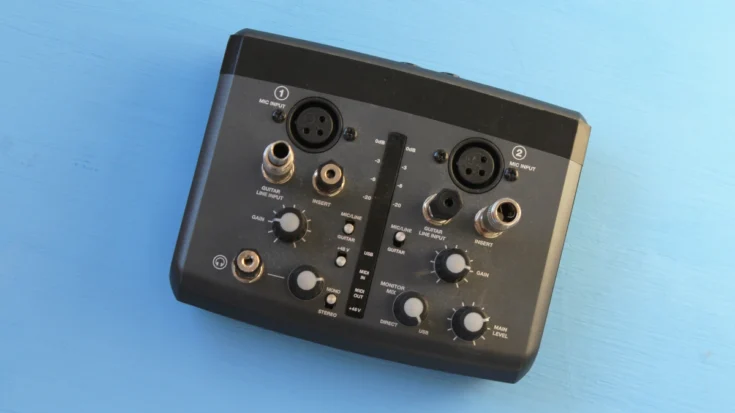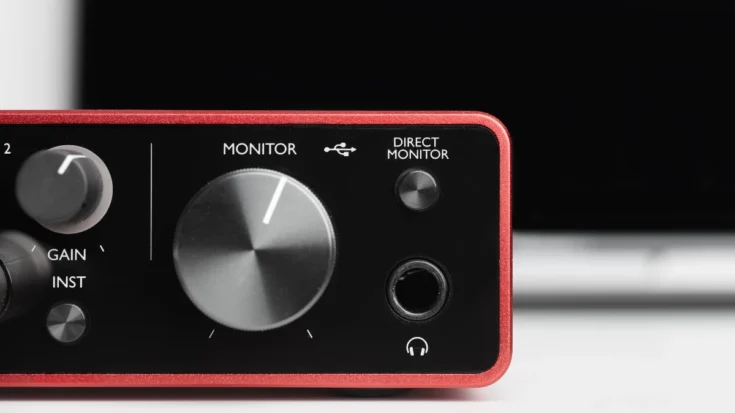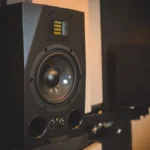Audio interfaces record audio to computer devices. Wireless audio interfaces are present, answering challenges related to technology that develops without cable use.
The presence of a wireless audio interface makes portability for recording even higher, because you can record anywhere to get the recording results you want.
Read this article until the end to find out about the wireless audio interface from its definition, function, advantages, and regulations in Indonesia.
Also Read
Table of Contents
What is a Wireless Audio Interface?

A wireless audio interface is a device that connects a musical instrument, microphone, or other audio source to a computer wirelessly, such as via Bluetooth or WiFi. It offers a wireless connection alternative to wired audio interfaces that rely on physical connections such as USB or Thunderbolt.
Audio interfaces serve as a bridge between the analog and digital audio worlds. It allows you to record, playback, and process sound with your computer.
The Function of Wireless Audio Interface
A wireless audio interface has the main function of providing a wireless audio connection between an audio source device and an audio receiver device without the use of cables. Here are some specific functions of the audio interface:
- Wireless audio transmission: Through technologies such as Bluetooth, Wi-Fi, or other wireless technologies, a audio interface transmits audio signals from a source device to a receiving device.
- Ease of connection: Usually, audio interfaces are easy to install and use, with only a few setup steps required to connect the source and receiver devices.
- Creates flexibility of use: Users can use audio interfaces in various situations and environments, both indoors and outdoors.
The Advantages of Wireless Audio Interface

Wireless Audio Interface has several advantages, ranging from easy integration to additional features. Summarized from various sources, here are some of the advantages that you can feel when using it:
1. Can be easily integrated
One of the advantages of wireless audio interfaces have the advantage of ease of integration. It comes with features such as Bluetooth or WiFi that allow users to connect with various devices wirelessly.
2. Better sound quality
Wireless audio interfaces is their better sound quality. These interfaces offer high-quality preamps and converters, which improve the sound quality of the audio signal and produce good sound.
3. Easily portable
Another advantage of this interface is its portability. Wireless audio interfaces are designed to be portable, making them ideal for use in various locations, such as home, studio, or stage.
4. Low latency
Very low latency is an advantage of this interface. It allows real-time recording and monitoring, so it can be utilized in various occasions such as live streaming, music recording, and sound production.
5. Additional features
Last but not least, some interfaces offer additional features such as equalizers, compression, reverb, and MIDI I/O. These additional features are beneficial for integration with the digital music instruments you use for recording.
Wireless Audio Interface Regulations in Indonesia

Wireless audio interface uses communication technologies such as Bluetooth or WiFi that operate within a specific frequency spectrum. In Indonesia, any Bluetooth or WiFi-based wireless device is required to have DJID (Directorate General of Digital Infrastructure) under the Ministry of Communication and Digital (KOMDIGI).
Wireless audio interface regulations are based on KEPMEN No. 260 Tahun 2024 and No. 12 Tahun 2025, which require all Bluetooth or WiFi-based devices to meet specific technical standards before being sold in the country.
The DJID certification ensures that the product meets government safety and quality regulations and does not interfere with other communication devices. The certification process involves technical testing, such as frequency adjustments, safety checks, and compatibility with the surrounding environment.
Once the tests are completed, products that pass are listed in a Test Result Report, which confirms that the product is safe and ready for sale in Indonesia. This report reassures customers that the product meets technical standards and is secure.
For companies wanting to sell a wireless audio interface in Indonesia, Type Approval Certification Services for ICT Products are available to assist with this process. This service includes preparing technical and legal documents, conducting required testing, ensuring compliance with regulations, helping companies streamline the certification process, and giving consumers confidence in certified products.


















